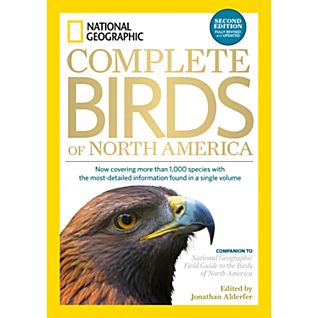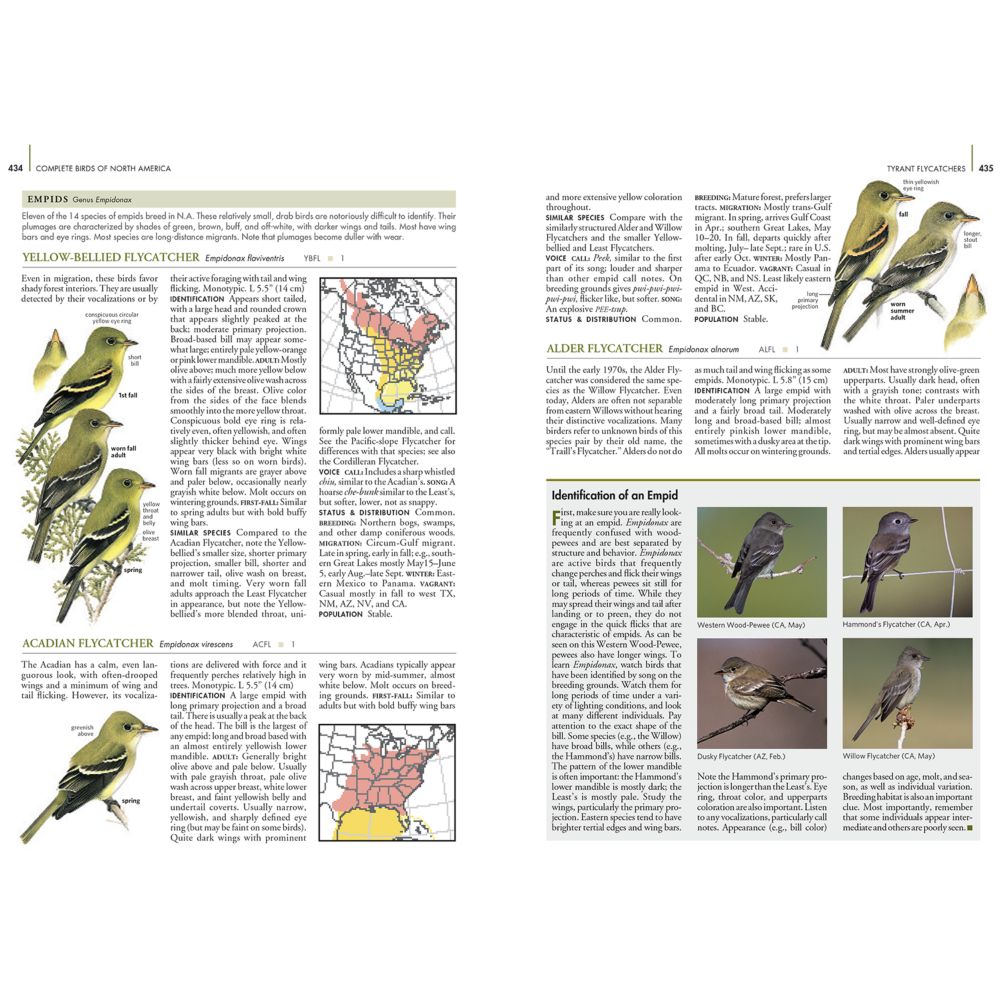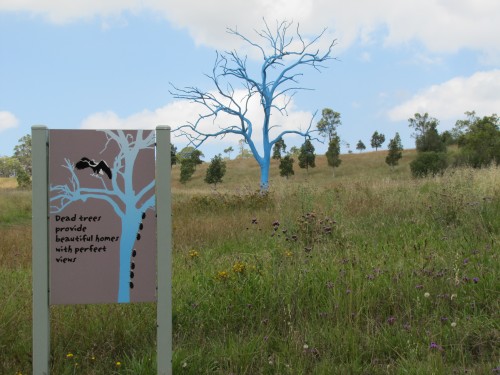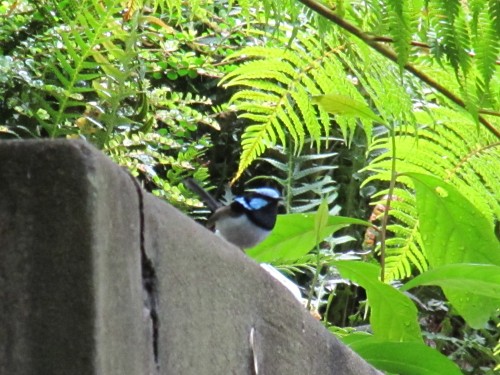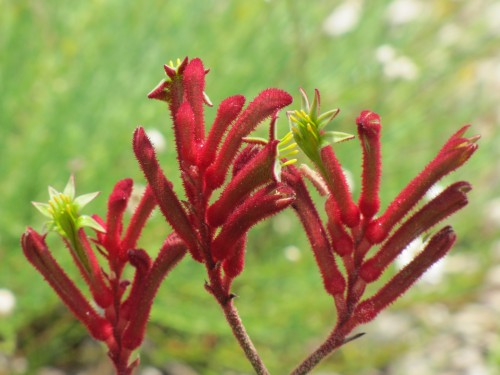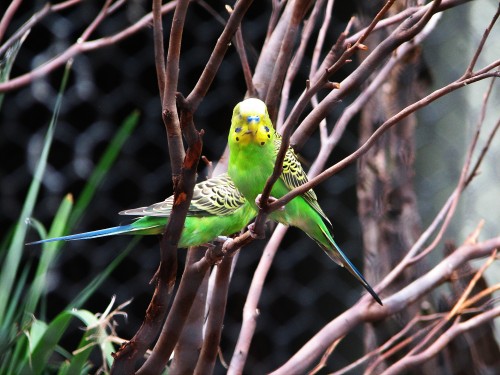Review: National Geographic Complete Birds of North America
National Geographic Complete Birds of North America, 2nd Edition: Now Covering More Than 1,000 Species With the Most-Detailed Information Found in a Single Volume,
Edited by Jonathan Alderfer, with Jon L. Dunn, maps by Paul Lehman
National Geographic Society, October 2014.
ISBN-10: 1426213735; ISBN-13: 9781426213731
744pages; 10.1 x 7.2 x 1.8 inches
This is a truly magnificent volume and one I am pleased to add to my library. Although I live in Australia and do most of my birding here I have been birding in a number of non-Australian countries. Sadly, I have yet to spend any time birding in the North American continent, a state I would like to correct sometime soon. This wonderful volume just adds a keen impetus to that desire.
I did not buy the first edition of this great work, so I cannot make comparisons. It has been “fully revised and updated” so I will have to take the editor’s word for that. There has been a significant increase in the number of species covered, now numbering over 1000. Edited by Jonathan Alderfer, this volume is a natural companion to the National Geographic Field Guide to the Birds of North America.
Look at the numbers
This monumental work stacks up well as far as the numbers are concerned:
- a total of 744 pages
- Over 1000 species featured (compared with 962 in the 1st edition and 990 in the Field Guide)
- Over 800 distribution and migration maps
- 150 full colour photographs
- 9 photographers
- Over 4000 illustrations
- 21 artists
- 89 family groups included
- An interesting group of rarities discussed
- The text draws on the combined expertise of 25 birding authorities
- Two pages of references to Additional Reading
Format and layout
Each family of birds has a short introductory essay, followed by thorough coverage of each species in that family. Each species is then given a thorough coverage in the main body of the text, including:
- a general introductory paragraph
- Identification details (including male/female, juvenile and plumage variations)
- Geographic variation (where appropriate)
- Details of similar species
- Voice
- Status and distribution
- Population notes, including changes in numbers
- Range maps
- A small, field guide type illustration
- A photograph (selected species)
Range maps
The colour-coded range maps are very detailed and include:
- breeding range (salmon)
- year-round range (purple)
- winter range (blue)
- migration range spring and autumn (orange)
- migration range mainly in spring (green)
- migration range mainly in autumn (yellow)
- a range of other symbols (eg arrows showing direction of migration – see below)
Birds in flight
One of the useful details include the illustrations showing different aspects of a species in flight. This is particularly handy for those species birders see more often in flight rather than sitting or perching.
Concluding comments:
Overall, this is not only an impressive publication, it is immensely useful and helpful. It is by no means a thorough scientific handbook featuring and summarising all the current knowledge on each species; other handbooks do not far more effectively. (As an aside, it is nothing like our Handbook of Australian, New Zealand and Antarctic Birds (HANZAB) which is in 7 volumes, each of over 1000 pages of small print.) It doesn’t pretend to be an exhaustive authority on all things birds in North America. However, it succeeds admirably in being a single-volume reference to all the species of one continent, easy to read, easy to use and a delight to read – or just browse. It will delight all birders, from casual and inexperienced backyard birders through to field-hardened experts.
All I have to do now is:
- Find space on my bookshelf for this new volume
- Save up for a birding trip to North America.
Simple.
Good birding.
Disclosure: I would like to thank National Geographic for kindly providing a review copy of this book.
Further reading:
- National Geographic Pocket Guide: Birds of North America
- National Geographic Complete Birds of North America 2nd edition: a book review
- Review: Brushed by feathers by Francis Wood
- Review: a Field Guide to the Birds of Colombia
- Review: A Field Guide to the Birds of Australia (8th edition, Simpson and Day)
- A guide to the birds of East Africa: a novel
It looks like a blue gum
I just had to stop and take a photo of this special tree in the Mt Annan Botanic Gardens in Sydney. Many of the trees in Australia are in the eucalyptus family, commonly known as “gum trees”. One group of them is also known as “blue gums”. The staff here in the gardens must have a good sense of humour.
The sign in the foreground explains the message they are trying to get across: “Dead trees provide beautiful homes with perfect views.”
Collectively, the gum trees of Australia provide homes for countless numbers of creatures. A single large tree – like the one in the photo – can be home to many species of insects, beetles, spiders, lizards as well as birds, bats, possums and many others. The trees provide shelter, roosting spots, nesting sites, nesting hollows, food and perching spots.
On the down side, millions of dead, mature trees like the one in the photo, have been chopped down for building materials, railway sleepers, firewood and for fence posts. Even a dead tree can provide a home for many creatures, especially if the tree has good nesting hollows. Owls and parrots especially like these hollows, and so do possums and bats. While large stands of mature trees do remain, the popularity of open fires and slow-combustion fires has accelerated the demise of many older dead trees.
Disclosure: I must confess to liking a wood fire myself, and so I am in a small way probably guilty of destroying some of these beautiful old trees. To partially lessen my guilt, only yesterday we arranged for a heating consultant to inspect our home to advise us on alternative methods of heating. Installing a reverse cycle air conditioner is the way to go, powered largely by our solar panels on the roof.
A visit to the Australian Botanic Gardens Mt Annan
On our recent trip to visit family in Sydney we were determined to visit the Australian Botanic Gardens Mt Annan at Campbelltown in the south eastern part of greater Sydney. In recent visits to our son it has never worked out to take a day trip to these gardens. In fact, our last – and only visit – was in April 2000. Our memories of that visit were getting very hazy, though I do remember seeing Double-barred finches there – my one and only sighting of this species.
The Australian Botanic Gardens Mt Annan are part of the Royal Botanic Gardens Sydney and are run by the same Trust. The gardens are 416 hectares in size and include hills, fern gullies and creeks, and lakes. One section even boasts a decent mountain bike track. About 4000 Australian plants are on display in these gardens. Unfortunately, very few were flowering at the time of our visit. We could only imagine what it would look like in the spring. (Note to self: organise a visit in spring!)
Despite the lack of flowers I was still pleased to record about 40 bird species during our stay. One of them was a shy Superb Fairy-wren shown above. He was skulking around in the undergrowth in the fern gully, just where the light was too poor for photos. His brief appearance in a lighter spot was not quite long enough for a good photo.
Below I’ve shown one of the plants in flower on show during our visit.
I will write more about the birds I saw in coming days.
Australian Bird Week
We celebrate all kinds of special days and special weeks, so why not a special week just to celebrate the wonderful birds of Australia?
In a way – that is what this site is all about – celebrating the fact that we have an abundance of wonderful birds in this land of ours.
This celebration runs from today until the 25th October 2013. You can find out more about Australian Bird Week by clicking here.
As a part of the week, organisers are asking Australians to vote for their favourite bird (click here).
Which species will you vote for? Below is a photo of my favourite bird.
Beautiful Budgerigars
I am quite pleased with this photo of two budgerigars. It was taken through the wire netting of one of the aviaries in the Adelaide Zoo here in south Australia. The viewer is not even aware of the netting between my camera lens and the birds.
Budgerigars, probably the most kept pet bird in the world, is truly magnificent in its natural colours and in its natural environment. I know breeders of this species have developed all sorts of amazing colour variations: yellow, blue, purple, white, speckled and even red – though I suspect the photo of a red one I found online was actually of a bird dyed that colour.
My question is: WHY?
Why mess with beauty and perfection. The natural colours are just perfect.
Rant over.
